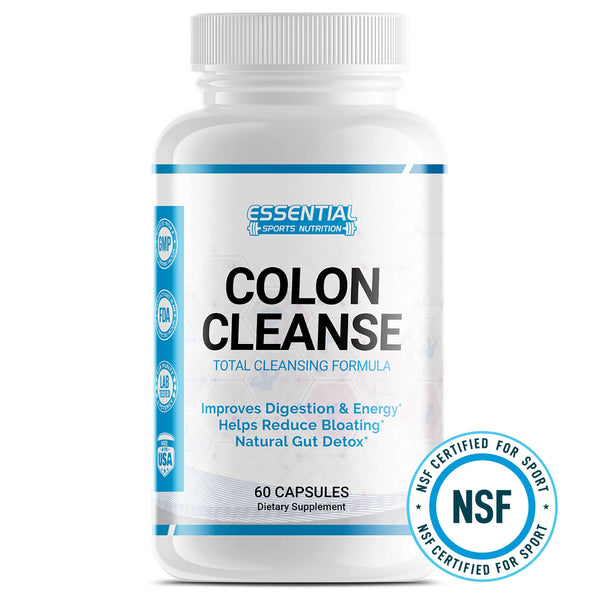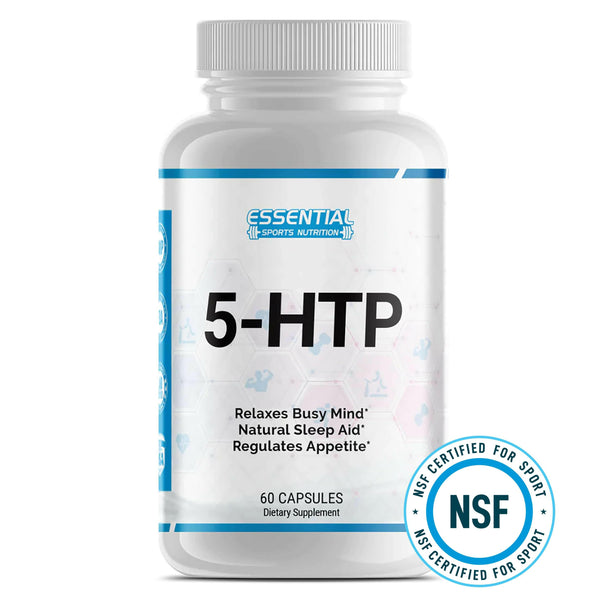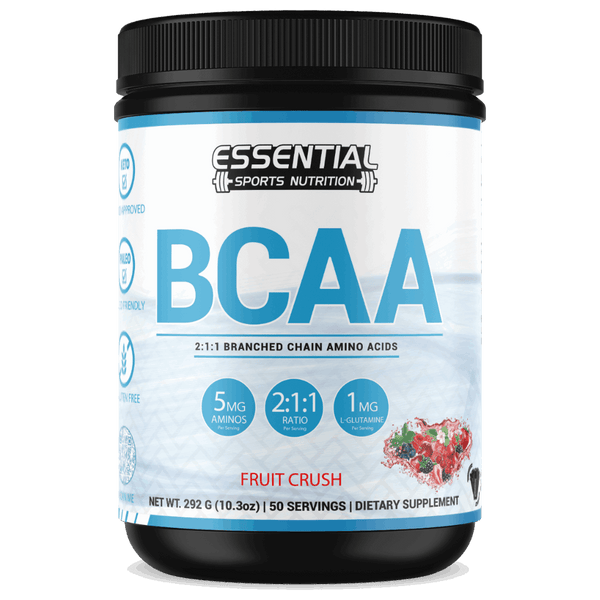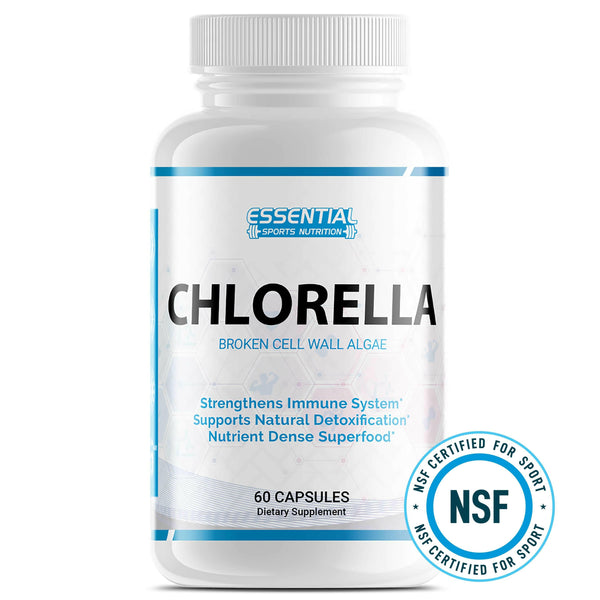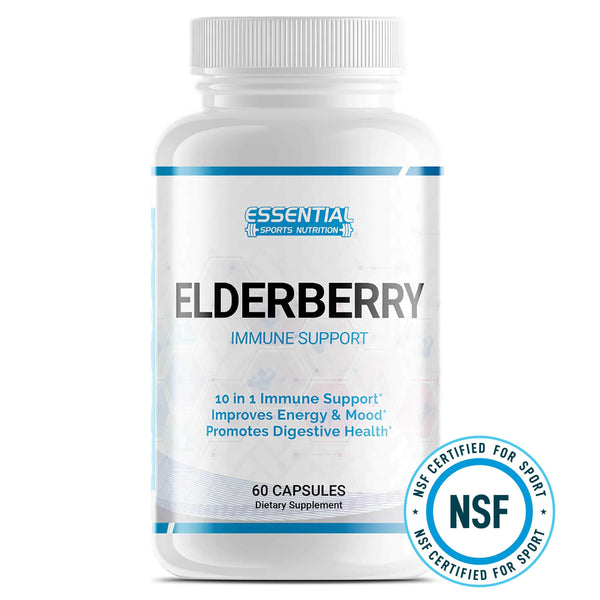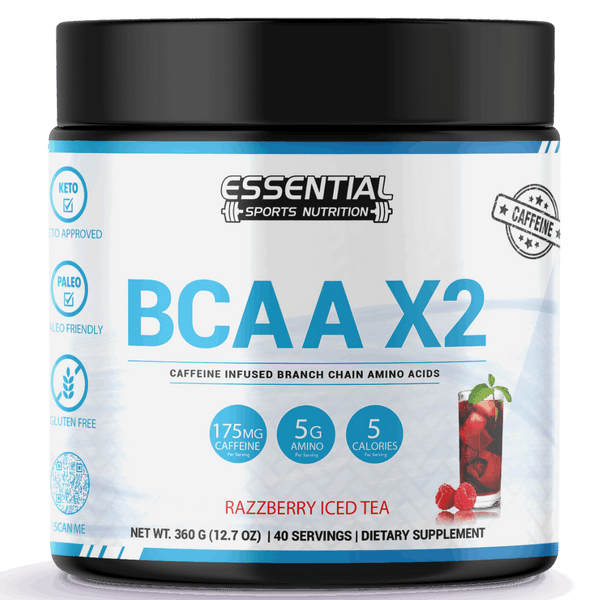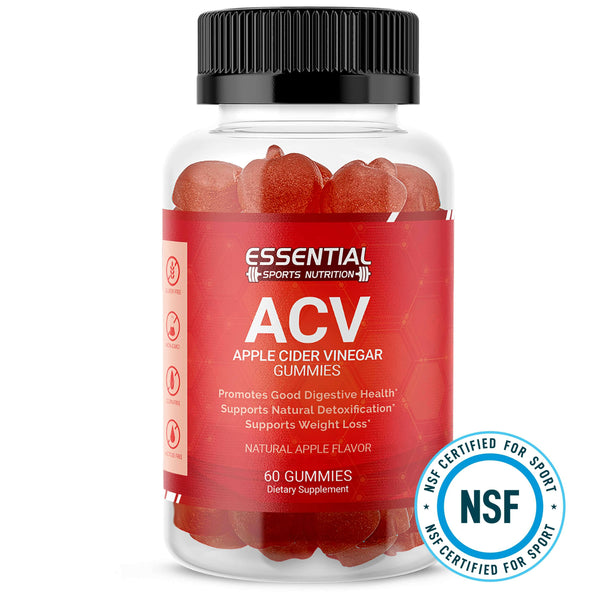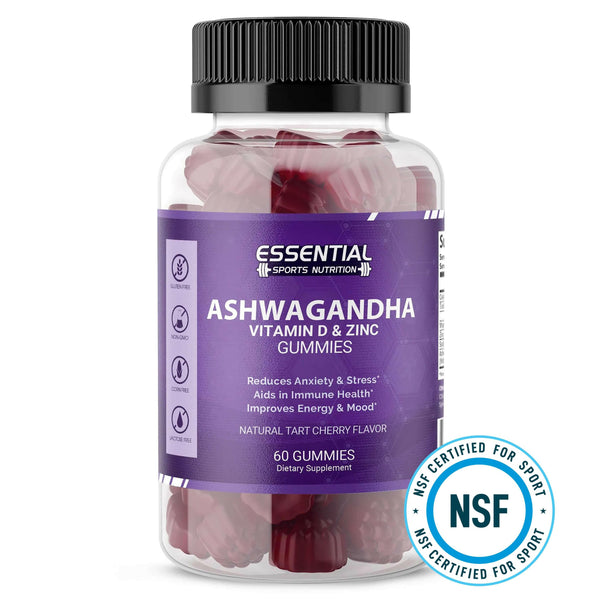Tips to Speed Up Muscle Recovery and Maximize Muscle Growth
Whether you're hitting the gym regularly or just starting a new workout routine, muscle soreness can be an unwelcome guest that overstays its welcome. It's that all-too-familiar ache following a heavy lifting session or after trying out a new exercise class that leaves you questioning whether you’ve pushed yourself too hard.
You’re not alone in pondering how to ease these discomforts and spring back into action with vigor.
Here’s something to think about: to help your muscles recover doesn’t have to be as challenging as scaling Mount Everest. Did you know that rest and recovery are just as important as the workout itself for building strength? Skimping on recuperation time could put you at a higher risk of injury, stalling your progress and dampening your spirits.
Maximize muscle recovery and keep injuries at bay so nothing holds you back from reaching your fitness goals. We'll guide you through hydration hacks, nutritional nuggets, active techniques, passive perks, lifestyle tweaks - everything needed for resilient results!
Key Takeaways
-
Stay hydrated and replace lost electrolytes with water or sports drinks to flush toxins and bring nutrients to muscles for faster recovery.
-
Include protein-rich foods and healthy carbohydrates in your diet post-exercise to repair muscle tissues and replenish energy stores.
-
Utilize active recovery methods like a proper cool-down phase after workouts and low-intensity movement on rest days to improve muscle repair.
-
Prioritize quality sleep as it promotes the release of growth hormones essential for muscle repair, aiding injury prevention.
-
Incorporate passive recovery techniques such as foam rolling for myofascial release, using compression garments, and engaging in thermal therapies like ice baths or heat treatments.
Understanding Muscle Recovery and Its Importance

Muscle recovery is essential for allowing your muscles to repair and grow after intense workouts. Neglecting proper recovery time can increase the risk of injury and hinder progress in strength and conditioning.
It's crucial to understand the importance of helping your body get the rest it needs to maximize results while preventing harm.
Why Muscle Recovery Time is Crucial for Muscle Growth
Allowing your body enough recovery time after a workout is just as important as the exercise itself for muscle growth. Think of it this way: when you do resistance training or any form of strength training, you're creating tiny tears in your muscle fibers.
It's during the rest period that your muscles repair these micro-injuries and grow stronger. Overloading muscles with continuous exercise without adequate rest can lead to injury and halt progress.
Giving yourself one to three days between workouts, especially after high-intensity exercises, provides your body with the chance to rebuild tissue and replenish energy stores. This not only helps prevent burnout but also contributes to better performance in future workouts.
Quality sleep is an essential ingredient in this process since growth hormone, crucial for muscle repair, is released during deep sleep stages. By prioritizing recovery time, you're setting up a solid foundation for consistent muscle growth and overall physical well-being.
The Risks of Neglecting Muscle Recovery
Ignoring muscle recovery can lead to a host of problems that disrupt your fitness journey. If you skip the downtime your muscles need, you might face persistent soreness and fatigue, making it hard for you to stick with your exercise routine.
Overworked muscles don't have the chance to repair and grow stronger, which could stall your progress or even cause strength levels to decline.
Allowing muscles inadequate time to heal increases the risk of injuries like strains and sprains. Muscle tissue that hasn't fully recovered is more prone to damage when subjected to physical exertion because it's weaker than fully-rested muscles.
This vulnerability not only sidelines you temporarily but can also lead to chronic issues that could keep you away from doing what you love longer-term.
Rest days are critical in preventing burnout and overtraining syndrome—a condition where excessive exercise leads to decreased performance and potentially serious health risks. Pushing through pain without sufficient rest may seem heroic, but it compromises your immune function, leaving you susceptible to illness.
Pay attention; ignoring rest periods undermines the very goal of improving health and fitness through regular physical activity.
Hydration and Nutritional Support for Exercise Recovery
To support muscle recovery, it's crucial to stay hydrated by drinking plenty of water and replenishing electrolytes with sports drinks. Additionally, consuming protein-rich foods or supplements and healthy carbohydrates can provide the necessary nutrients for optimal muscle repair and growth.
Give Your Muscles Plenty of Water
Staying hydrated is key to keeping your muscles in top condition, especially after a workout. Your body loses water through sweat and breathing, which needs to be replaced for optimal muscle function and repair.
Aim to drink around two liters of water daily; it will help flush out toxins, keep joints lubricated, and transport nutrients that aid in muscle recovery.
Include hydration as a non-negotiable part of your fitness routine just like lifting weights or running. Not only does drinking enough water maintain proper circulation but it also ensures that all the hard work you put into exercising pays off by helping with the muscle healing process.
Remember, muscles need water just like they need protein and carbs – don't let dehydration undo your progress!
Balance Electrolytes with Sports Drinks
Sports drinks are a convenient way to replenish electrolytes lost during intense workouts. The key electrolytes—sodium, potassium, and chloride—aid in maintaining fluid balance and muscle function.
Rehydrating with sports drinks can help restore these essential minerals, facilitating faster recovery after exercise. Additionally, the carbohydrates present in sports drinks provide an immediate energy source to fuel muscles and support overall workout recovery.
Consuming sports drinks post-exercise aids in offsetting the loss of fluids and electrolytes through sweat. This rehydration is vital for preventing dehydration-related fatigue or cramping and supports the body's natural recovery process.
Consume Protein-Rich Foods or Supplements
Protein plays a vital role in muscle recovery and growth. Incorporating protein-rich foods like lean meats, eggs, dairy products, legumes, and nuts into your diet can support the repair of muscle tissues post-exercise.
Additionally, supplements such as whey protein powders or amino acid blends can provide a convenient way to ensure adequate protein intake for optimal recovery. Consuming protein within 30 minutes to an hour after a workout aids in initiating the muscle repair process by stimulating protein synthesis.
Protein also helps reduce delayed-onset muscle soreness (DOMS) while promoting overall strength and resilience in muscles. Research suggests that consuming about 20-25 grams of high-quality protein after exercise yields significant benefits for muscle recovery and adaptation.
Replenish Energy with Healthy Carbohydrates
Replenishing energy after a workout is vital for muscle recovery and preventing injury. Opt for healthy carbohydrates such as whole grains, fruits, and vegetables to refuel glycogen stores in muscles.
Consuming nutrient-dense carbohydrates within 30 minutes of exercise can support effective recovery by replenishing energy levels and promoting muscle repair. In addition to aiding recovery, consuming the right kind of carbs can help prevent fatigue and optimize performance during subsequent workouts.
Carefully selecting the right sources of carbohydrates post-exercise bolsters the body's ability to recuperate efficiently. Foods with a low glycemic index release glucose gradually into the bloodstream, providing a sustained source of energy without spiking blood sugar levels.
Active Workout Recovery Techniques

Incorporating active recovery techniques like low-intensity movement and a proper cool-down phase can help improve muscle repair and prevent injury. Read on to discover how these strategies can benefit your overall fitness journey.
The Role of a Cool-Down Phase Post-Workout
After wrapping up your workout, engaging in a cool-down phase is essential to gradually lower your heart rate and reduce the risk of muscle stiffness. A proper cool-down helps dissipate lactic acid and facilitates the circulation of oxygenated blood throughout your body, aiding in the removal of metabolic waste products from muscles.
Additionally, it promotes flexibility by incorporating stretching exercises that target major muscle groups worked during the session, further mitigating post-exercise tightness.
Incorporating a cool-down period into your workout routine can help prevent injury and promote efficient muscle recovery. By gently easing out of high-intensity activity with dynamic stretching or light aerobic exercise, you allow your body to transition smoothly into a state conducive to repair and rejuvenation.
Benefits of Low-Intensity Movement on Rest Days
Low-intensity movement on rest days offers several benefits for muscle recovery and injury prevention. Engaging in gentle activities like walking, yoga, or light cycling can enhance blood flow to muscles, promoting the delivery of essential nutrients and oxygen.
This type of movement also aids in the removal of metabolic waste products from muscles, reducing soreness and accelerating the recovery process. Additionally, low-intensity activity helps to maintain joint mobility and flexibility while preventing stiffness, ultimately contributing to improved performance during subsequent workout sessions.
Moreover, incorporating low-intensity movement into rest days supports mental well-being by reducing stress and enhancing relaxation. Physical activity stimulates the release of endorphins, boosting mood and alleviating tension.
Passive Recovery Methods to Let Your Muscles Recover

Incorporating passive recovery methods such as prioritizing sleep, using foam rolling for myofascial release, and utilizing compression garments can significantly aid in muscle recovery and injury prevention.
The Healing Power of Sleep
Consistent, quality sleep is essential for muscle recovery and injury prevention. Adequate rest time allows the body to repair and rebuild muscles after intense workouts. During deep sleep, growth hormone production peaks, promoting tissue healing and muscle growth.
Research suggests that individuals who consistently get enough high-quality sleep tend to have better physical performance and lower risk of injury compared to those with poor sleep habits.
Quality sleep also plays a crucial role in regulating stress hormones like cortisol, which can impact post-workout recovery and overall well-being. Additionally, insufficient sleep has been linked to increased inflammation and decreased immune function, both of which can hinder muscle recovery and increase the risk of injuries.
Myofascial release through foam rolling
Foam rolling aids myofascial release, reducing muscle tension and soreness. When using a foam roller, apply gentle pressure to targeted areas of the body to release tight fascia and improve flexibility.
Foam rolling can enhance recovery by increasing blood flow to your muscles while breaking down adhesions between muscle layers and surrounding tissues.
The use of foam rollers is beneficial for maintaining healthy connective tissue, improving range of motion, and alleviating stiffness after workouts. Incorporating regular foam rolling into your routine may aid in preventing injuries related to tight or restricted muscles.
Using Compression Garments for Improved Circulation
Compression garments can enhance circulation and promote muscle recovery after intense exercise. These specialized clothing items, such as compression sleeves or leggings, apply gentle pressure to the limbs, aiding in blood flow and reducing inflammation.
This improved circulation helps deliver oxygen and nutrients to muscles while removing waste products more efficiently, supporting faster recovery. Research suggests that wearing compression garments post-workout can reduce muscle soreness and speed up the repair process.
Additionally, these garments may help prevent injury by providing stability and support to the muscles during physical activity.
Thermal Therapies for Muscle Recovery

Utilize ice baths to reduce inflammation and promote recovery, while also incorporating heat therapies like saunas or hot showers to relax and soothe muscles after intense workouts.
These thermal treatments can aid in accelerating muscle recovery and preventing injury.
Ice Baths and Their Anti-Inflammatory Effects
Ice baths, also known as cold water immersion, are a powerful tool for reducing inflammation and speeding up muscle recovery after intense workouts. The cold temperature constricts blood vessels, which helps to reduce swelling and decrease the breakdown of tissue.
This process also helps to flush out metabolic waste products from the muscles, promoting faster healing and repair. Incorporating ice baths into your post-exercise routine can enhance your overall recovery by diminishing muscle soreness and alleviating any potential inflammatory response that may occur.
The anti-inflammatory effects of ice baths have been supported by research demonstrating their ability to minimize tissue damage and decrease the perception of pain following strenuous physical activity.
Heat Therapies to Relax and Soothe Muscles
Heat therapies offer effective ways to relax and soothe muscles, aiding in post-workout recovery. Applying a heating pad or taking a warm bath can help increase blood flow, reduce muscle stiffness, and alleviate discomfort.
Additionally, using heat wraps or seeking out saunas can promote relaxation and aid in the restoration of fatigued muscles after intense exercises. It's worth considering these heat therapies as part of a comprehensive approach to maximizing muscle recovery time.
Incorporating heat therapies into your routine, such as using heating pads or enjoying a warm bath, can assist in relieving muscle tension and promoting blood circulation for quicker recovery.
Restorative Practices to Prevent Injury

Incorporating stretching and flexibility exercises, as well as regular massage to alleviate muscle tension, can significantly reduce the risk of injury during workouts. Understanding the importance of proper rest intervals is also crucial for preventing overtraining and potential long-term damage to muscles.
The Importance of Stretching and Flexibility Exercises
Stretching and flexibility exercises play a vital role in enhancing muscle recovery and preventing injuries. Proper stretching helps to maintain the muscles' elasticity, improving overall range of motion and reducing the risk of strain or tears during exercise.
Incorporating dynamic stretching before a workout can help prime the muscles for activity while static stretching post-workout aids in relaxing and elongating tired muscles, supporting quicker recovery.
Engaging in regular flexibility exercises not only promotes better muscle function but also enhances joint mobility, allowing for smoother movements during physical activities. By incorporating these exercises into your routine, you can actively contribute to injury prevention by maintaining supple and resilient muscles.
Incorporating Massage to Alleviate Muscle Tension
Massage is a proven method for relieving muscle tension and aiding in post-workout recovery. By applying targeted pressure and manipulation, massages help reduce soreness, improve blood circulation, and enhance flexibility.
Incorporating regular massage sessions as part of your recovery plan can promote faster healing and prevent injury by reducing the build-up of tension in muscles.
Additionally, studies have shown that massage therapy can decrease inflammation and promote relaxation, which are vital components of effective muscle recovery. Whether it's through self-massage techniques or professional sessions with a trained therapist, prioritizing this practice can significantly contribute to maintaining optimal muscle health.
Understanding the Role of Proper Rest Intervals
Proper rest intervals play a vital role in muscle recovery and injury prevention. When engaging in resistance exercise, allowing adequate rest between sets is crucial for maximizing the effectiveness of each repetition.
Studies have shown that shorter rest periods can lead to increased fatigue and decreased performance during subsequent sets, hindering muscle recovery. Additionally, longer rest intervals may be necessary when aiming for maximal strength gains and hypertrophy.
By understanding the importance of proper rest intervals, individuals can tailor their workout routines to optimize muscle recovery and prevent overuse injuries.
Lifestyle Adjustments for Optimal Recovery

Incorporating healthy lifestyle adjustments such as maintaining a consistent sleep routine, managing stress levels, and avoiding common pitfalls that hinder muscle recovery can significantly contribute to maximizing muscle recovery and preventing injury.
Prioritizing these aspects outside of the gym is just as important as the workout itself.
Structuring a Sleep Routine for Muscle Repair
To optimize muscle repair and bolster injury prevention, structuring a consistent and restful sleep routine is paramount. Aim for 7-9 hours of quality sleep each night to support the body’s natural recovery processes, including muscular healing and growth.
Prioritize creating a comfortable sleeping environment by minimizing noise, light, and electronic distractions while ensuring your mattress and pillows adequately support restful sleep.
Incorporating an evening wind-down ritual such as reading or gentle stretching can signal the body to prepare for rest, aiding in deeper slumber conducive to effective muscle recovery.
Prioritizing regular sleep patterns combats fatigue, enhances mental wellbeing, and supports optimal physical performance. Adequate sleep also assists in managing stress response contributing to overall health resilience.
Managing Stress to Support Recovery Processes
Balancing stress levels is pivotal for promoting effective muscle recovery. Incorporating stress-relieving activities such as yoga, meditation, or deep breathing exercises can help minimize the negative impact of mental strain on the body's repair mechanisms.
Scientifically proven to reduce cortisol levels, which can impede muscle recovery, stress management techniques contribute to a healthier overall state and facilitate quicker recuperation post-workout.
Incorporating regular rest days into your exercise routine is essential for managing stress and supporting optimal recovery from workouts. Engaging in hobbies or leisure activities that bring joy and relaxation also plays a crucial role in reducing overall stress levels.
Avoiding Common Pitfalls that Hinder Muscle Recovery
Neglecting rest and sleep can hinder muscle recovery, leading to increased risk of injury. Inadequate hydration and poor nutrition also impede the body's ability to repair and grow muscles after intense workouts.
Additionally, overtraining without sufficient rest intervals can lead to fatigue, decreased performance, and stalled progress. It's essential to listen to your body's signals, adjust workout intensity accordingly, prioritize quality sleep for proper recovery cycles, and maintain a well-balanced diet rich in protein and carbohydrates.
Properly managing stress levels is crucial as mental stress can negatively impact physical recovery. Furthermore, neglecting warm-up exercises before intense workouts can increase the risk of strains or injuries.
Monitoring and Adjusting Your Recovery Plan

Listen to your body's signals and adapt your recovery strategies to the intensity of your workouts, ensuring that you prioritize rest and recovery for long-term success. Encourage users to read more about these effective muscle recovery tips in the full blog.
Listening to Your Body's Signals
Pay close attention to how your body feels during and after workouts. Notice any lingering soreness, fatigue, or discomfort. These signals are your body's way of communicating its needs for recovery and rest.
If you experience prolonged muscle soreness or extreme fatigue, it may be a sign that you need more time to recover before your next intense workout session. Similarly, if you notice persistent joint pain or decreased performance during workouts, these signs indicate the importance of adjusting your training intensity or seeking professional advice to prevent potential injuries.
Be mindful of changes in appetite, sleep patterns, and overall energy levels as they can also reflect the status of your muscle recovery process. Your body is constantly providing feedback on its condition; by paying attention to these signals and responding accordingly, you can proactively support optimal muscle recovery and minimize the risk of injury.
Adapting Recovery Strategies to Workout Intensity
Adapt your recovery strategies based on the intensity of your workouts. After high-intensity exercises, allow for a longer recovery period, ideally between two to three days. Incorporate active recovery techniques like low-intensity movement or yoga on rest days following intense workouts to support muscle repair and reduce the risk of injury.
Adjusting your nutrition is essential to match the demands of varying workout intensities. For instance, consume a post-workout snack containing protein and carbohydrates after high-intensity sessions to support muscle recovery.
Consider incorporating muscle recovery supplements or nutrient-rich foods like tart cherry juice and chocolate milk into your diet to aid in maximizing muscle recovery and preventing injury.
Conclusion
Incorporating these effective muscle recovery tips will not only maximize your workout results but also prevent the risk of injury, ensuring long-term fitness success.
Recap of Effective Muscle Recovery Tips
Maximize muscle recovery with these practical tips. Stay hydrated to aid muscle repair by drinking at least two liters of water daily, and balance electrolytes with sports drinks for optimal recovery.
Boost recovery by consuming protein-rich foods or supplements, along with healthy carbohydrates. Incorporate active recovery techniques like a cool-down phase post-workout and low-intensity movement on rest days to maintain circulation and flexibility.
Need some downtime? Ensure quality sleep - a crucial element in muscle repair. Additionally, try myofascial release through foam rolling to alleviate tension or use compression garments for improved blood flow while resting.
Encouragement to Prioritize Recovery for Long-Term Fitness Success
Prioritizing recovery is essential for long-term fitness success. By allowing your muscles to heal and preventing injuries, you can set the stage for consistent progress in your workouts.
Remember that proper nutrition, hydration, rest, and active recovery techniques are not just optional add-ons but vital components of a holistic approach to fitness. Incorporating these strategies consistently will help you maximize muscle recovery, prevent injury, and ultimately achieve your long-term fitness goals.
Consistently investing time in resting and recovering will pay off in the form of enhanced performance during workouts and reduced risk of overuse injuries. Understanding that muscle growth occurs during recovery periods should motivate you to prioritize these critical aspects of physical well-being throughout your fitness journey.
Speed Up Muscle Recovery FAQs
Q: What is muscle recovery and why is it important?
A: Muscle recovery is the process through which muscles repair and rebuild themselves after a tough workout. It is essential for preventing injury and optimizing performance and recovery.
Q: How long does it take for muscles to recover after a workout?
A: The muscle recovery time can vary depending on the intensity of the workout, but generally, it takes around 24 to 48 hours for muscles to fully recover.
Q: What are some proven ways to speed up muscle recovery?
A: Some proven tips to speed up muscle recovery include getting enough rest, fueling your body with a healthy diet, and incorporating recovery days into your workout routine.
Q: What is delayed onset muscle soreness (DOMS) and how can I reduce it?
A: Delayed onset muscle soreness is the muscle pain and stiffness that occurs a day or two after a tough workout. To reduce DOMS, it's important to listen to your body, give your muscles time to recover, and consider using techniques like foam rolling and gentle stretching.
Q: How can I improve my muscle recovery and prevent injury?
A: To improve muscle recovery and prevent injury, it's important to give your muscles the time they need to recover, fuel your body with the nutrients it needs, and incorporate activities that help decrease muscle soreness and strengthen muscle resilience.
Q: What are the best ways to speed up recovery from exercise?
A: The best ways to speed up recovery from exercise include staying hydrated, getting adequate sleep, consuming enough protein to support muscle repair, and avoiding overtraining.
Q: How does a healthy diet help with muscle recovery?
A: A healthy diet provides the nutrients and energy your body needs to recover and rebuild muscles. Consuming an adequate amount of protein, carbohydrates, and healthy fats is essential for muscle recovery and repair.
Q: What are the most effective tips to maximize muscle recovery?
A: Some effective tips to maximize muscle recovery include allowing for proper rest periods between workouts, incorporating active recovery activities, and adjusting your workout intensity based on your fitness level.
Q: Can muscle recovery tips help me build muscle and recover faster?
A: Yes, following muscle recovery tips can help you build muscle and recover faster by reducing the risk of injury, optimizing muscle strength, and supporting the overall recovery process to enhance performance in your next workout.
Q: How important is it to listen to your body in the muscle recovery process?
A: Listening to your body is crucial in the muscle recovery process as it allows you to recognize signs of fatigue, muscle damage, and overtraining, leading to better recovery and injury prevention.



